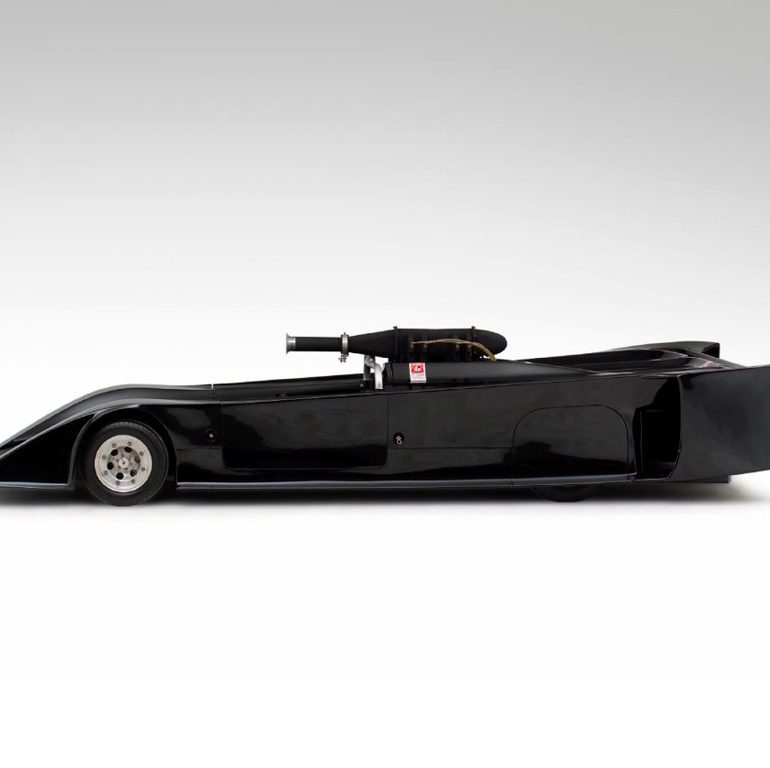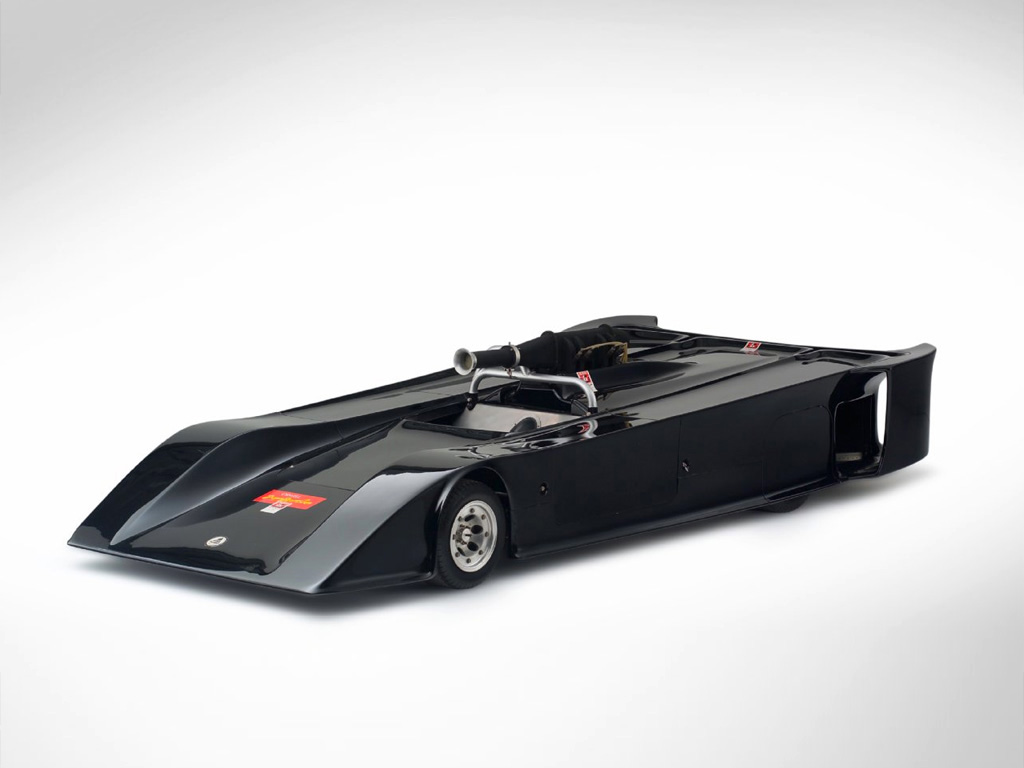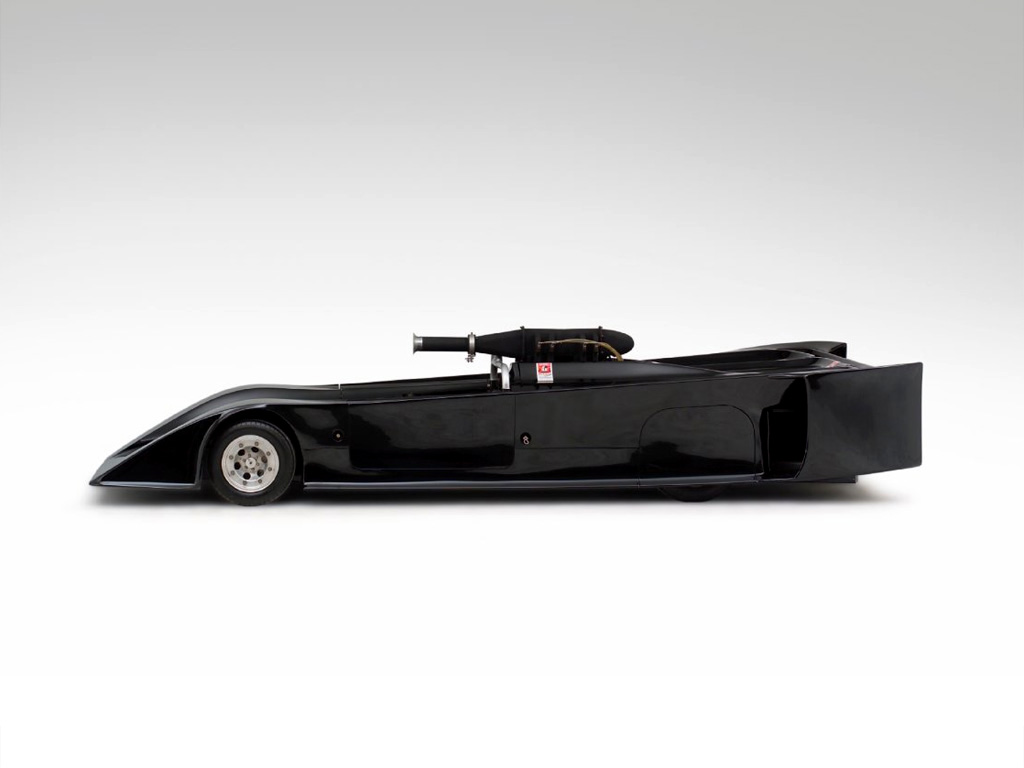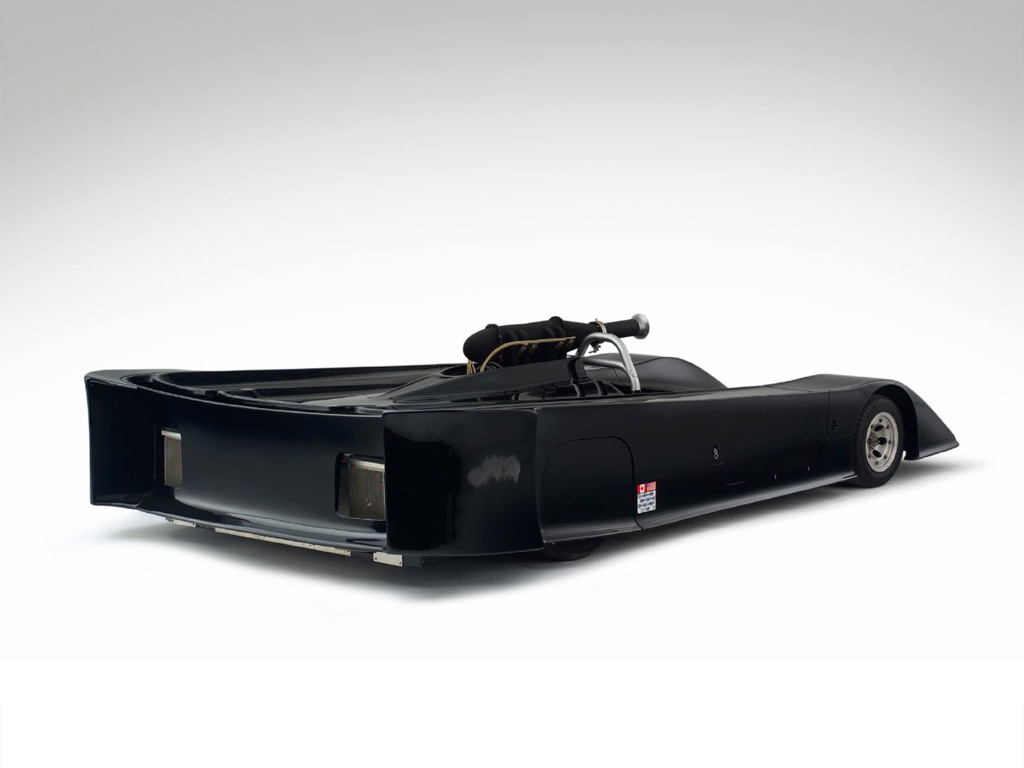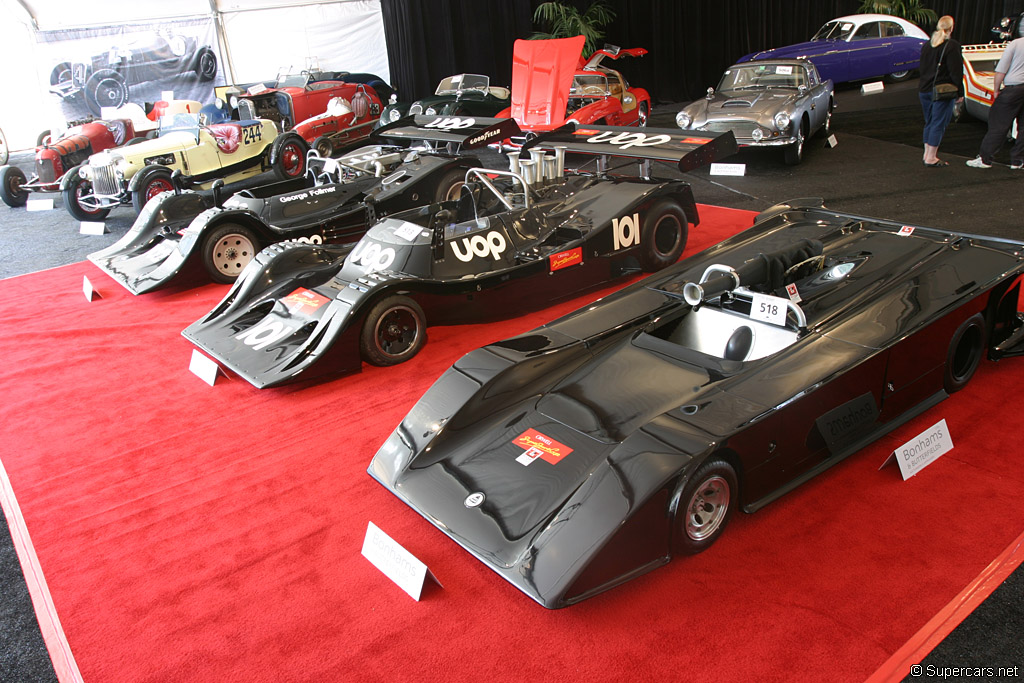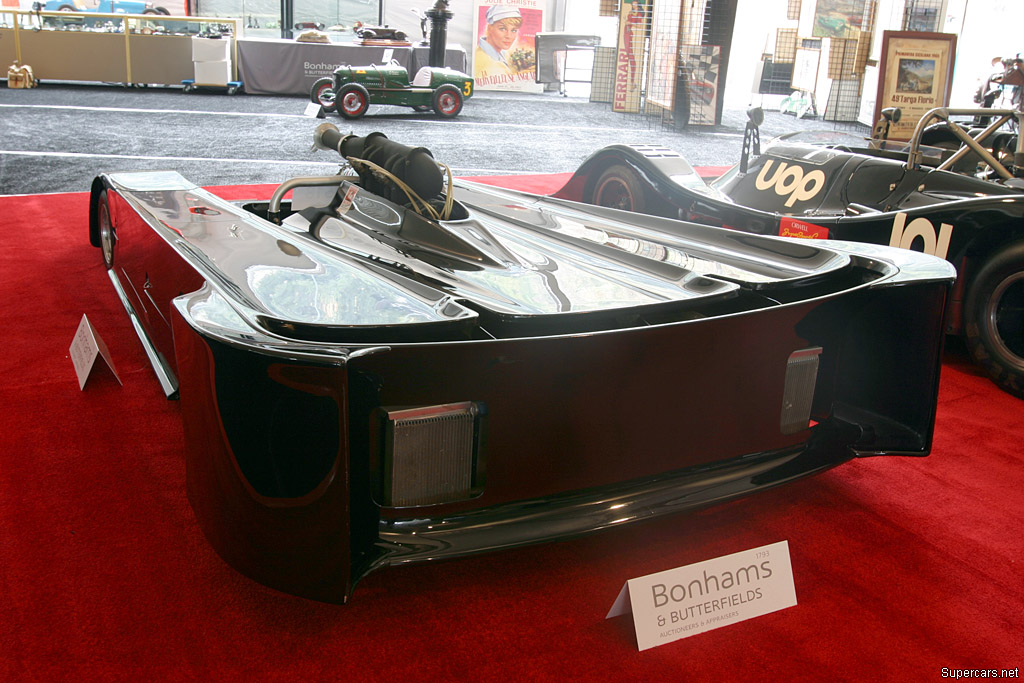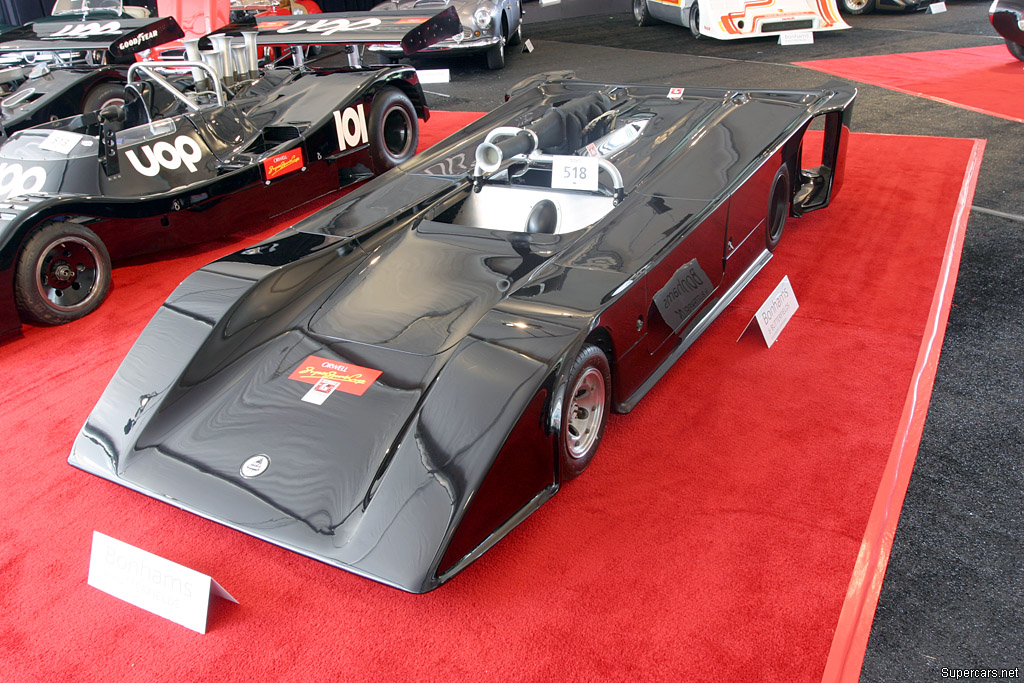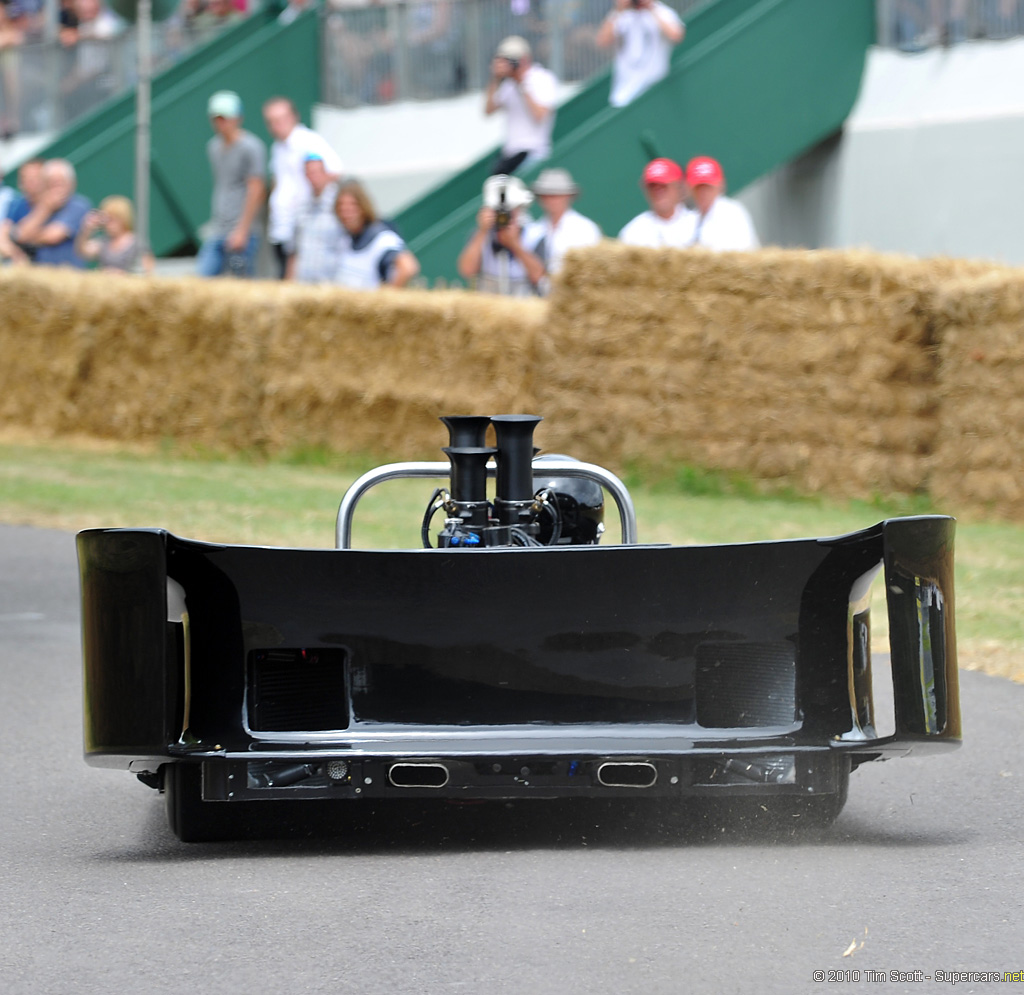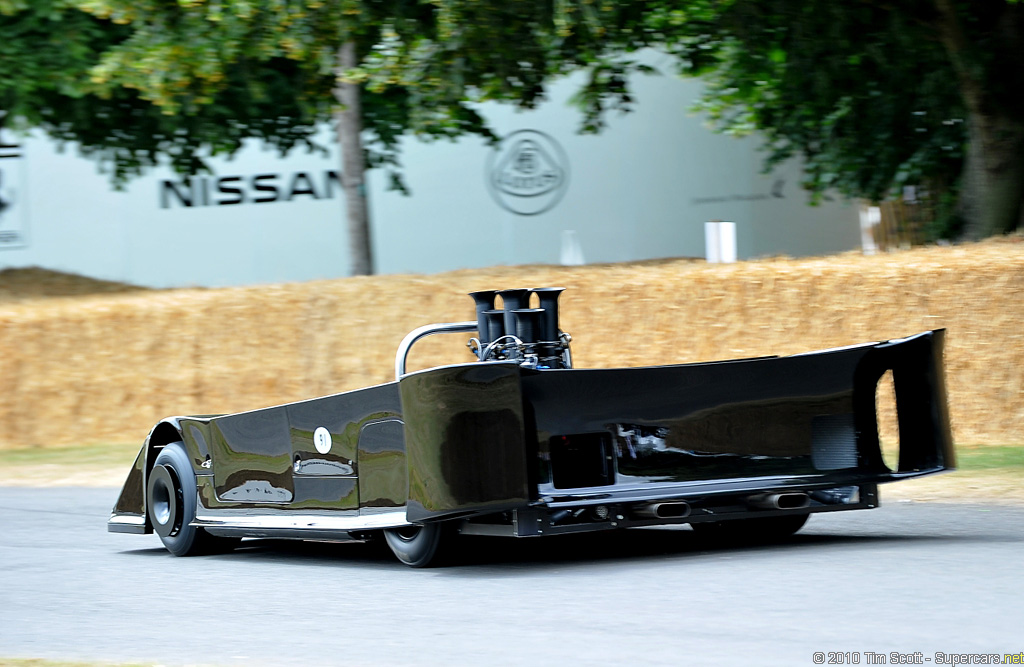1969 AVS Shadow Mk1 ‘Lowline’
The first AVS Shadow was this lowline prototype built for the 1970 Canadian-Amercian (Can-Am) challenge. It was unusually low and captured the attention of Road & Track who put it on their cover and called it the “most radical Can-Am yet”. Others have called it the ‘go-kart’ or ‘roller-skate’. The car’s creator, Don Nichols called it “the two dimensional car.”
Pete Lyons wrote “The car is hard to believe even when seen, so tiny is it – literally knee-high. It all depends on the minute Firestone tires, which have 11ins and 16ins footprints but are mounted on wheels 10ins and 12ins in diameter.”
Don Nichol’s started Advanced Vehicle Systems Incorporated with the sole intent of winning the Can-Am. He had designer Trevor Harris design the first car which became known was the Mk1. It used 10×11 inch wheels up front and 12×16 wheels in the rear to achieve a low stance. The idea was to have a severely reduced frontal area to maximize top speed potential.
This setup unfortunately left little room for much more than the engine. For instance, the suspension travel was severely limited, forcing the use of small wishbones and triple mini-springs. The brakes were machined down to an eight inch diameter, and required special active cooling to pull air from the area.
The driving position was cramped and required the driver to straddle the horizontal steering column and use 45º pedals. Just behind the driver was a huge big-block Chevrolet engine with massive intake plenium that dominated the cabin. There was no room for a clutch so that was relocated within arm’s reach and only used for starting.
Another problem was gearing, so a special Hewland LG600 was built that could withstand clutchless shifts and also included a custom gear set to deal with the small tires. It had enough strength to deal with Chevrolet’s potent all-aluminum ZL1 engine with over 600 bhp on tap. Many different engines were built-up for the Shadow included the production L88 and each was fitted by Fred Larsen with a custom oil scavenger and pan to reduce engine height.
The chassis was built from box-sectioned aluminum and the body was thin unstressed Fibreglass. Many of the box sections of the chassis were removable and modular for ease of repair. Two 90 liter fuel tanks formed part of the chassis on either side of the engine.
Work began on the first car in the middle of 1969, but the final specification wasn’t ready until the season opener at Mosport in 1970. Later the car received a massive integrated rear wing that increased the height of the car substantially.
Despite a theoretical top speed of 250 mph, the Mk1 was relative failure on the track, with overheating being a main issue. George Follmer should be well credited for driving such an avant garde and powerful car.
Bonham’s Auction
At their Important Sale of Collectors’ Motorcars and Automobilia on 18 Aug 2006 at the Quail Lodge Resort, Bonhams sold a Lowline Mk1 for $111,150 inclusive of Buyer’s Premium. It was described as “In the mid-1980s [ex shadow fabricator] Don Nichols was approached on behalf of the great German competition car enthusiast and collector Peter Kaus – creator of the Rosso Bianco Collection – who was interested in acquiring a number of his important CanAm cars. He was particularly interested in the 1969-announced small-wheeled prototype in its original launch form – as publicized at the time in connection with its being driven by past Indianapolis star Rufus ‘Parnelli’ Jones. We understand that Mr. Nichols had the car restored in that form and amongst the documentation file accompanying all these cars at Quail Lodge there is a copy of a ‘Bill of Sale’ between Don G. Nichols of Carmel, California, and Mr. Peter Kaus of Aschaffenburg, Germany, dated May 16, 1990”. According to Doug Nye this was a car was severely damaged in the trailer accident from the “extensively re-skinned Mosport and Ste Jovite race tub.”
Story by Supercars.net
In Detail
| type | Racing Car |
| built at | Santa Ana, California, USA |
| coachbuilder | Wayne Hartman |
| engineers | Trevor Harris, Don Borth, Larry Stellings |
| engine | Chevrolet 90º V8 |
| position | Front, Logitudinal |
| aspiration | Natural |
| block material | All-Aluminum |
| valvetrain | Pushrod OHV, 2 Valves per Cyl |
| displacement | 8095 cc / 494 in³ |
| power | 462.3 kw / 620 bhp |
| specific output | 76.59 bhp per litre |
| body / frame | Fiberglass Body over Aluminum Semi-Monocoque Tub |
| driven wheels | RWD |
| front tires | 3.50/12.50-10 Firestone Indy |
| rear tires | 3.50/17.00-12 Firestone Indy |
| front brakes | Ventilated Discs w/Hurst Airheart Calipers |
| rear brakes | Inboard Ventilated Discs w/Hurst Airheart Calipers |
| front wheels | F 25.4 x 27.9 cm / 10 x 11 in |
| rear wheels | R 30.5 x 42.5 cm / 12 x 16.75 in |
| steering | Rack & Pinion |
| f suspension | Wishbones w/Four Small Springs, Friction Shocks, Anti-Roll Bar |
| r suspension | Wishbones w/Four Small Springs, Friction Shocks |
| weight distro | 25 % / 75 % |
| transmission | 5-Speed Hewland LG600 |
| tran clutch | Borg & Beck9 Inch |
| fuel capacity | 189.25 litres or 50 gal. |
Auction Sales History
AVS Shadow-Chevrolet Lowline CanAm –
In the mid-1980s Don Nichols was approached on behalf of the great German competition car enthusiast and collector Peter Kaus – creator of the Rosso Bianco Collection – who was interested in acquiring a number of his important CanAm cars. He was particularly interested in the 1969-announced small-wheeled prototype in its original launch form – as publicized at the time in connection with its being driven by past Indianapolis star Rufus ‘Parnelli’ Jones. We understand that Mr. Nichols had the car restored in that form and amongst the documentation file accompanying all these cars at Quail Lodge there is a copy of a ‘Bill of Sale’ between Don G. Nichols of Carmel, California, and Mr. Peter Kaus of Aschaffenburg, Germany, dated May 16, 1990 in which the vendor transferred “…all my rights and title of my personal owend (sic) racecar CAN-AM SHADOW of the year 1968 over to…” the German buyer.
Auction Source: 2006 Monterey Preview


